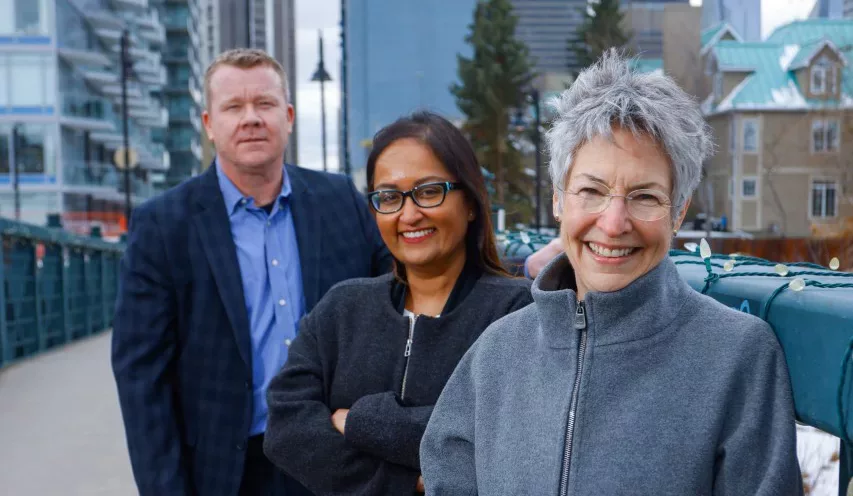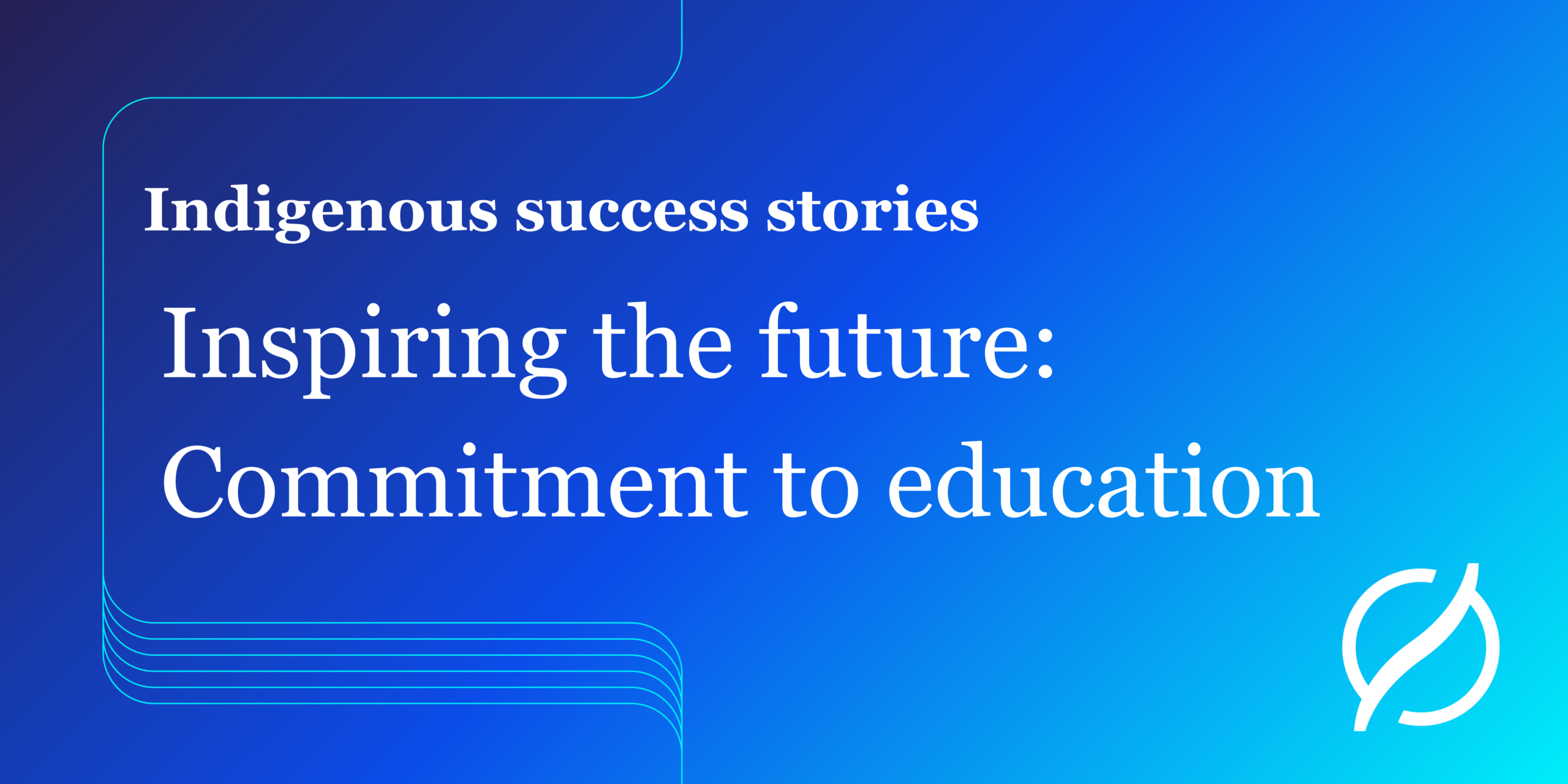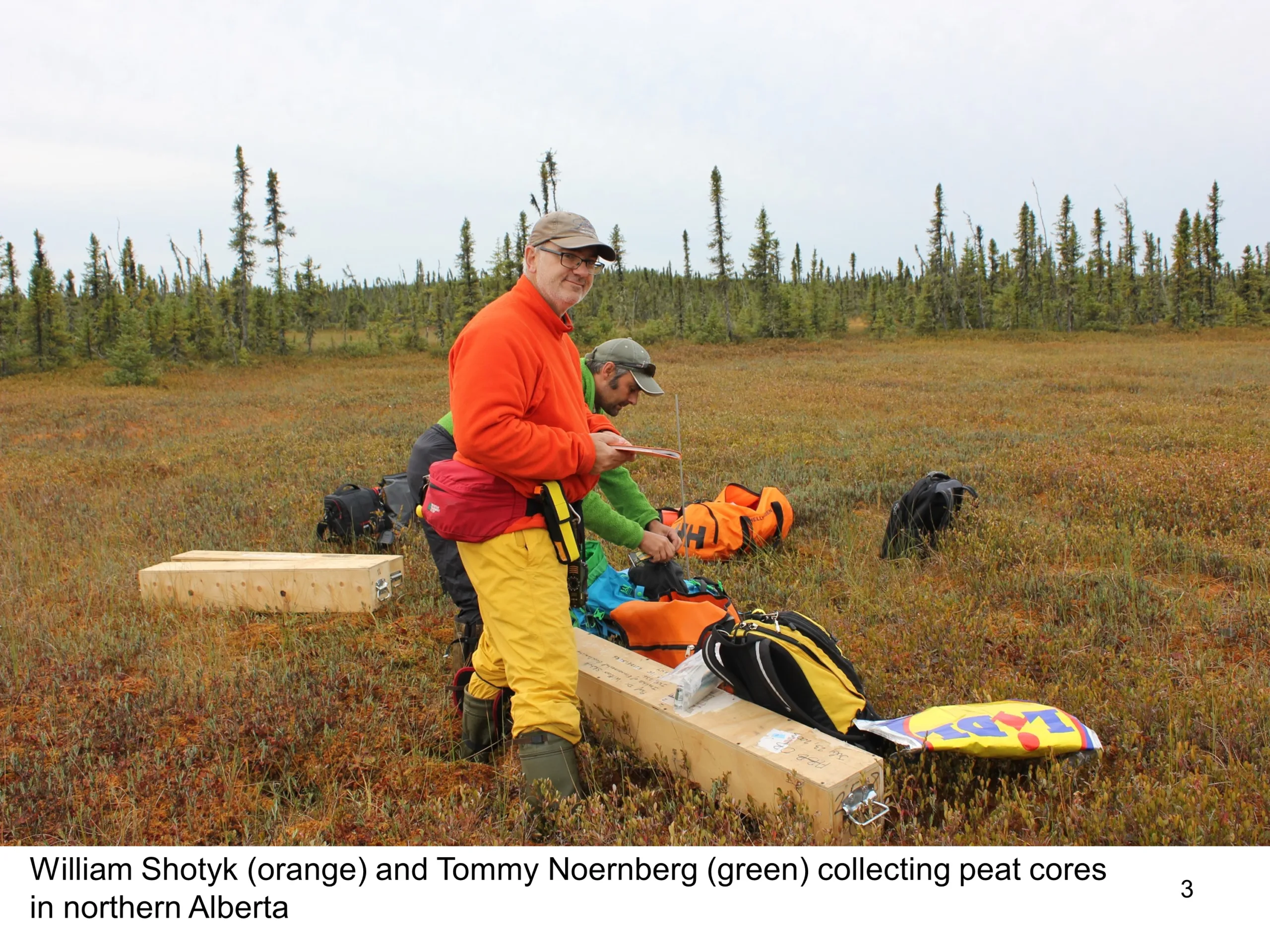Experience, enthusiasm has Pathways Alliance team focused on solving the net zero emissions puzzle

Photo above (left to right): James Dunn (Imperial), Anamika Mukherjee (Cenovus Energy) and Joy Romero (Canadian Natural) are among the more than 120 scientists, engineers and other professionals working on helping the Oil Sands Pathways to Net Zero Alliance achieve its goal of net zero emissions by 2050.
More than 120 scientists, engineers, geologists, chemists, physicists, executives, communicators and business-development leaders from six oil sands companies are working together in the Oil Sands Pathways to Net Zero Alliance to achieve an unprecedented greenhouse gas emissions reduction plan.
This is a story about the passion and the will of just some of the talented and focused individuals who are playing their part to drive the solutions and the technologies that will help achieve net zero emissions by 2050 to help Canada achieve its climate goals and ensure the Canadian oil sands becomes the world’s preferred supplier of responsibly produced oil.
“WE HAVE AN INCREDIBLE OPPORTUNITY”
Joy Romero, metallurgical Engineer, Canadian Natural
With a career spanning four decades and a resumé filled with significant contributions to reduce the environmental footprint of the Canadian oil sands, nobody would question if Joy Romero decided to close her laptop, put on sneakers and chase her eight grandchildren around full time.
Instead, Canadian Natural’s Executive Advisor for Innovation continues to find ample motivation being part of a team chasing down solutions for the ultimate goal of achieving net zero greenhouse gas emissions from oil sands production by 2050.
“I should be retired but for now it is far too exciting and rewarding to both mentor and learn from this incredible team that is making sure Canada’s natural resources offer opportunities for the next generations of workers and ensuring we continue to produce responsible, sustainable, affordable energy for Canadians – and the globe. ” said Romero, who was inducted in the Canadian Petroleum Hall of Fame in 2018 and was recognized by Foresight Canada as one of the top 20 women leading clean tech in Canada.
The current president and a founding member of the Clean Resource Innovation Network, or CRIN, Romero has supported the leading edge of dry tailings technologies that limit the need for tailings ponds, water conservation and land reclamation efforts and has been working on carbon capture and storage technology since the early 2000s.
Now part of the more than 120 scientists, engineers, geologists, chemists, physicists, executives, communicators and business-development leaders from six oil sands companies working together in the Oil Sands Pathways to Net Zero Alliance, Romero sees this opportunity as an important step to help address climate change.
A metallurgical engineer by training, Romero said much of the technology is there now to allow for the Pathways foundational project – one of the world’s most extensive carbon capture and storage (CCS) networks linking 20 oil sands facilities to a carbon storage hub near Cold Lake, Alberta.
In fact, the first-generation work Alberta researchers and engineers have done building commercial-scale carbon capture and storage projects in the province has allowed others around the world to adopt the technology.
The second generation of carbon capture technology is already being developed but what is needed is the desire from government leaders and the general public to implement it with industry, so it is cost competitive with other countries that are receiving significant economic support from governments.
“Governments and industry need to come together so that everyone understands that it’s all forms of energy required to support nine billion people as we move forward as a planet,” said Romero.
“It’s not a polarization of one form of energy versus another. Every type of energy will be needed to feed people, keep us warm, clothe us and keep us secure – without a greenhouse gas footprint”.
She acknowledges the oil sands industry has faced significant scrutiny, something that has helped motivate her.
Passion is driving force of Pathways members
“We have an incredible opportunity to help change the narrative about oil sands production and demonstrate to the world that we are focused on reducing our emissions while establishing Canada’s place as the most preferred producer for the energy the world needs. These are not mutually exclusive goals.”
Helping the next generation feel proud of the work they are doing to help Canada achieve its climate goals and making Canada the preferred source of energy around the world is a major part of her motivation. She knows how tough and draining it can be to be challenged by friends and family about working in an industry that has been under fire.
“The Pathways Alliance project has really been a source of motivation for this talented group and I think everybody has an extra spring in their step as they are laser-focused on finding the solutions needed to ensure we meet our goal of net zero emissions by 2050.”
“WE’RE GOING TO WIN”
Anamika Mukherjee, Chemical Engineer, Cenovus Energy
Anamika Mukherjee – a chemical engineer working as Cenovus Energy’s Director, Innovation – is grateful for the opportunity to work on a project so vital to the global climate challenge as well as the future of Canada’s energy sector.
“As the Pathways Alliance net zero goals started getting published and publicized it was very exciting for me,” said Mukherjee, who leads the technology development workstream for Pathways also looking at the scaling and deployment of carbon capture technologies, other process improvements and technologies such as hydrogen, direct-air capture, bitumen beyond combustion and the eventual safe deployment of emissions-free small modular reactors to power oil sands production.
“I was worried about our sector in terms of how we were being perceived because I have never considered the oil sands to be a sunset sector. In fact, with the kind of rigor we put into our design and operations, I believe oil sands is the best laboratory there is for testing and commercializing new technology.
“My passion has evolved into ‘I’m going to help enable us to win. We’re going to win this energy transition.’ While I know it sounds competitive, I truly believe that we (the oil sands) can be a globally leading clean source of energy.
“We live on borrowed land. We rent the earth while we are here. Our job is to leave the earth as best as possible for future generations. And when I think of all the innovations that have come from the oil sands sector and how much we have planned, this is what the world needs to catch on to.”
“We have the smartest people from each of the companies at the table, the most terrific people so passionate about this work coming together multiple times a week and this is not even their day job. This is over and above what they do in their own companies and the energy level is still so high.”
“There is incredible talent at this table. There’s no chance we are going to fail.”
“BRING IT HOME. THAT’S WHAT WE HAVE TO DO.”
James Dunn, Chemist, Imperial
Failing is not something James Dunn, Imperial’s Director of Sustainable Technology Innovation, takes even a moment to ponder when considering meeting the Pathways Alliance goals.
Like he has done for most of his career, Dunn, who has a PHD in chemistry, prefers to stay focused on the task at hand, working to help the Pathways Alliance find solutions for each piece of the technology puzzle to achieve the goal of net zero.
“I tend to focus on the end goal and then find solutions to achieve it,” said Dunn.
“Anecdotally, if you think about the story of Apollo 13. They had a job: bring the astronauts home. The scientists and engineers didn’t get distracted by what happens if they didn’t, failure wasn’t an option,” said Dunn, referring to NASA’s successful efforts to bring a lunar mission safely back to earth in 1970 after an explosion badly damaged the space shuttle’s life support systems.
“Innovation and technology development are in my DNA and my passion. For me, I have always just focused on trying to challenge the status quo and find new and creative ways to solve the problems that we encounter.
Having cross-generational talent from all of the companies is essential to the success of the Pathways Alliance, he said.
“This is unprecedented so we need to think creatively and figure out ways to come together. The talent at the table is second to none. Having the different perspectives that each of the companies brings is a one plus one equals three scenario.
“The whole is greater than the sum of the parts. The Pathways collaboration is really going to lend itself to a solution that is going to enable us to win the energy transition.”
“One company alone is not going to win it. That is not a formula for success.”
“No one has a monopoly on good ideas. The different innovative aspects that each organization brings to the table is going to help us because we are focused on a common, single goal of net zero: ‘Bring it home.’ That’s what we have to do.”
“WE INTERACT AND WE COLLABORATE IN A WAY THAT WE DID NOT BEFORE.”
Bronwyn Hyland, nuclear physicist, Suncor Energy
For Bronwyn Hyland, Suncor’s Program Lead for Clean Energy and Hydrogen, working on multiple technologies to address the climate challenge was the main reason the nuclear physicist made a mid-career change in 2018, coming to the oil sands sector from Canadian Nuclear Laboratories.
“If you want to solve the problem of climate change you should go and work on it where you can make the biggest difference,” said Hyland, noting the heft the industry is bringing to the table to continuously lower its emissions.
“One of the things I really like working at Suncor and working with Pathways is the ability to look at a range of options to figure out which one is the best to use, develop them and know that if you can develop a technology that works you really have the chance and the drive to deploy that technology here. It’s quite exciting.”
Hyland too is impressed with the complementary skills of those working on the project.
“The collaboration we’ve seen since the start of Pathways has been enormous. We interact and we collaborate in a way that we did not before.”
“The way that we’ve come together to start planning how we would develop and deploy the technology together in a commercial sense is unprecedented.”
She points to Suncor Chief Climate Officer Martha Hall Findlay’s guidance as pivotal to the group’s success.
“She understands the issues, but from a completely different angle than I do,” she said of Hall Findlay, who is a member of the Pathways Alliance steering committee.
“As a technical person, a physicist, I understand the technology and the technical challenge but having the different backgrounds that she has including in public policy and sustainability helps me understand how to engage, how to frame the problems and develop the solutions.
“Because to get to deployment, you need more than just the technology. You need the buy-in from all the key stakeholders and she helps bring that and the drive to do that.”
“TO WATCH THE PROGRESSION HAS BEEN IMPRESSIVE.”
Rebecca DeMott, Greenhouse Gas Engineer, Canadian Natural
Rebecca DeMott started working on the foundational project for Pathways early in the project development process. The engineer for Greenhouse Gas Projects for Canadian Natural said the collaboration of the traditionally competitive member companies has been unprecedented because everybody recognizes what’s on the line for the climate and for the future of the industry.
“It’s pretty exciting to be a part of and to watch something grow from what really was just a concept to this massive project where there’s now more than 100 people working on it. To watch the progression has been impressive,” said DeMott, who leads the Pathways Alliance group working on securing the underground pore space for its foundational carbon capture and storage project.
“This project is going to be transformational for the industry. I’ve got 20 to 30 years remaining in my career and I’m excited to work on a project that helps the oil and gas industry move forward and address some of the concerns related to climate change.
“The Pathways vision is going to drive Canada’s oil and gas industry to become more sustainable and help to keep it competitive with other oil producers globally.
“Everyone on the team is enthusiastic about getting this done and getting us to net zero. It doesn’t matter if you are old or young, climate change is something that affects us all and we need to work together to drive projects through to the finish line.”


